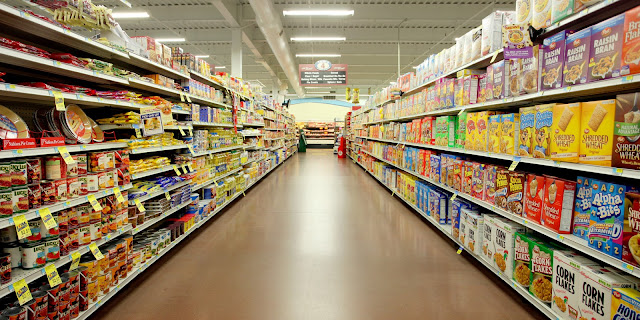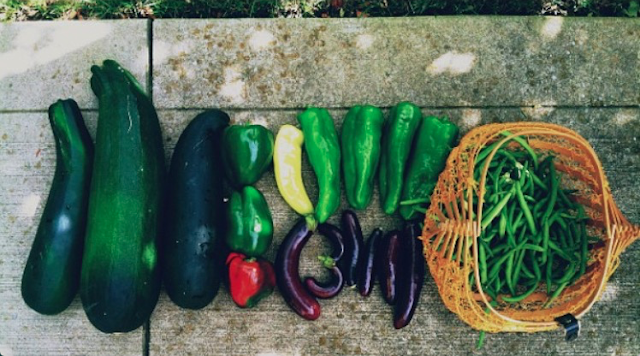Snap, crackle, pop art
Brightly colored cereal boxes line shelves illuminated by fluorescent lighting. Their animated cardboard characters scream at children strapped in metal carts to buy, eat, and repeat. The consumer pulls one off the shelf and inspects it. Alone, this cereal box fills a special need. Crunchy, salty, or fruity choices for the picnic in the park or breakfast in bed. But together, each cereal box is linearly connected to the other processed food products and they are accumulated into the menagerie we call our supermarket.
Pop artist, Claes Oldenburg, beautifies this post-WWII industrialization of food in the marketplace in his poem, Store Days.
"I am for the art of bright blue factory columns and blinking biscuit signs...I am for the U.S. Government Inspected Art, Grade A art, Regular Price art, Yellow Ripe art, Extra Fancy art, Ready-to-eat art, Best-for-less at, Ready-to-cook art...apple art, turkey art, cake art, cookie art...I am for the art a kid licks, after peeling away the wrapper."
-Store Days (1961)
What happens to the ugly vegetable art? The small, bruised art?
How do we respond to this picturesque version of food? Is it real?
The Paradox
Since the 1940's, post-WWII technology development such as farming tools and fertilizers forever changed the pace and quality of food produced, processed, packaged, and consumed. Overproduction of surplus crops like corn, wheat, and soy were made into processed foods high in fat, sugar, and salt, flooding the market and exceeding customer demands. Without the strains of rations, over consumption of these accessible, cheap foods occurred along with the growing obesity epidemic. Yet 1 in 8 people today struggle with hunger in the U.S!
If food is highly processed but easily disposable, do we value food for what it truly is: pure, labor some, and imperfect?
Playing with Food
Andy Warhol, Roy Lichtenstein, James Rosenquist, Tom Wesselmann, and Claes Oldenburg were among the most well-known Pop artists during the 1960s. Their emphasis on food includes paintings to collages to soft sculptures.
These artists' work represent the large scale and impact of food on consumers and the environment though the process of consumption and the layers of media that train consumers to buy-in to mass consumption.They highlight the sensual indulgence causing uncontrollable food consumerism patterns.
As an art era that emerged after WWII, Pop Art was a response to pop culture of consumers begging for immediate satisfaction that was fun and digestible (quite literally) to make life easier after a depressing war period. Pop Art continues to normalize overproduction and consumption of processed foods while negating our obligation to provide a sustainable food system. As this continues, the highly processed yet easily disposable nature of U.S. food culture is accepted without addressing the greater issue: food waste.
The combination of technologies that promote food waste like this garbage disposal advertisement
(1950) and the development of Pop Art have directly contributed to food waste in the U.S.
40% of food in the U.S. is wasted at once point or another along the supply chain. By 2030, the USDA and EPA aim to reduce food waste by 50%! It is Pop art mediums like advertisements and entertainment media that will largely impact consumer food choices and practices. Pop art is more than an image, but a way of marketing pre-existing thoughts, practices, and policies of our society.
Let us reconsider the entire supply chain including modern Pop art mediums through which food is marketed. By doing so, we gain insight as to who truly benefits from our purchases. Food waste is bad enough, but wasting products that are produced unsustainably for both our environment and our bodies are even worse.




Comments
Post a Comment